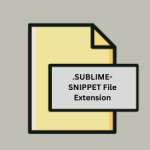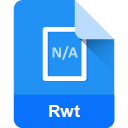.LLD File Extension

Logo! Soft Comfort LAD File
| Developer | Siemens |
| Popularity | |
| Category | Page Layout Files |
| Format | .LLD |
| Cross Platform | Update Soon |
What is an LLD file?
.LLD file extension is associated with Logo! Soft Comfort, a programming software developed by Siemens for their LOGO! logic modules.
These modules are utilized for automating small-scale industrial applications, ranging from simple control tasks to more complex processes.
The .LLD files contain ladder logic diagrams (LAD) which are used to program the LOGO! modules, enabling them to perform specific tasks according to user-defined logic.
More Information.
The history of the .LLD file extension dates back to the early 2000s when Siemens first launched the LOGO! series of logic modules.
These modules were intended to replace traditional relay control systems with a more flexible and programmable solution.
The initial purpose of the .LLD file was to store ladder logic diagrams, which are a type of electrical schematic diagram used to represent the logic of control circuits.
Ladder logic diagrams are widely used in industrial control applications due to their simplicity and resemblance to electrical relay circuits.
By storing these diagrams in .LLD files, Siemens provided a standardized method for saving, sharing, and reusing control logic designs.
Origin Of This File.
The .LLD file format was created to support the Logo! Soft Comfort software, which is designed to simplify the process of programming Siemens LOGO! logic modules.
Siemens, a leading global technology company, introduced this file format to allow engineers and technicians to design, simulate, and test control logic using a graphical interface, making the programming of logic modules more intuitive and efficient.
File Structure Technical Specification.
The .LLD file is a binary file format that contains the following components:
- Header Information: This section includes metadata about the file, such as version information, creation date, and author details.
- Ladder Logic Diagram Data: This section contains the actual ladder logic diagram, represented as a series of interconnected rungs. Each rung includes various elements like contacts, coils, timers, counters, and function blocks.
- Configuration Data: This section holds configuration settings for the LOGO! module, including input/output assignments, communication settings, and other module-specific parameters.
- Comments and Annotations: This section may contain user-added comments and annotations that provide additional context or explanations for the ladder logic diagram.
The .LLD file format is proprietary to Siemens, and detailed technical specifications are typically available through Siemens’ documentation and support resources.
How to Convert the File?
Converting .LLD files to other formats can be challenging due to the proprietary nature of the file format. There are a few approaches that users can take:
- Exporting as PDF: Logo! Soft Comfort allows users to export ladder logic diagrams as PDF files. This can be useful for documentation purposes, but the resulting PDF cannot be used to directly program other logic modules.
- Manual Recreation: If conversion to another PLC platform is required, users may need to manually recreate the ladder logic diagram in the programming software of the target platform. This can be time-consuming but ensures that the logic is correctly translated.
- Third-Party Tools: Some third-party tools and services may offer conversion capabilities, but their effectiveness and compatibility can vary. It is important to verify the accuracy of the converted logic.
Advantages And Disadvantages.
Advantages:
- Ease of Use: The graphical interface of Logo! Soft Comfort makes it easy for users to design and modify ladder logic diagrams without requiring extensive programming knowledge.
- Standardization: The .LLD file format provides a standardized method for saving and sharing control logic designs, ensuring compatibility across different LOGO! modules and projects.
- Simulation and Testing: Logo! Soft Comfort allows users to simulate and test their ladder logic diagrams within the software, reducing the risk of errors during actual deployment.
- Flexibility: The .LLD format supports a wide range of control functions, including timers, counters, and advanced function blocks, enabling complex automation tasks.
Disadvantages:
- Proprietary Format: As a proprietary format, .LLD files are tied to Siemens’ Logo! Soft Comfort software, limiting compatibility with other programming tools and platforms.
- Limited to LOGO! Modules: The .LLD file format is specifically designed for Siemens LOGO! logic modules, making it unsuitable for other types of programmable logic controllers (PLCs).
- Learning Curve: While the graphical interface is user-friendly, there may still be a learning curve for users unfamiliar with ladder logic or Siemens’ programming environment.
How to Open LLD?
Open In Windows
- Installation: Download and install Logo! Soft Comfort from Siemens’ official website. Follow the installation instructions provided by Siemens.
- Opening .LLD Files: Launch Logo! Soft Comfort, then use the “Open” function within the software to load .LLD files.
Open In Linux
- Installation: While Siemens does not provide a native Linux version of Logo! Soft Comfort, users can run the Windows version using compatibility layers like Wine.
- Opening .LLD Files: After setting up Wine and installing Logo! Soft Comfort, .LLD files can be opened within the software.
Open In MAC
- Installation: Siemens offers a version of Logo! Soft Comfort for macOS. Download the installer from Siemens’ website and follow the installation steps.
- Opening .LLD Files: Open Logo! Soft Comfort and use the “Open” feature to access .LLD files.













